120 Years Ago: Celebrating Collegiate Swimming and The First Intercollegiate Swimming Championship of 1898
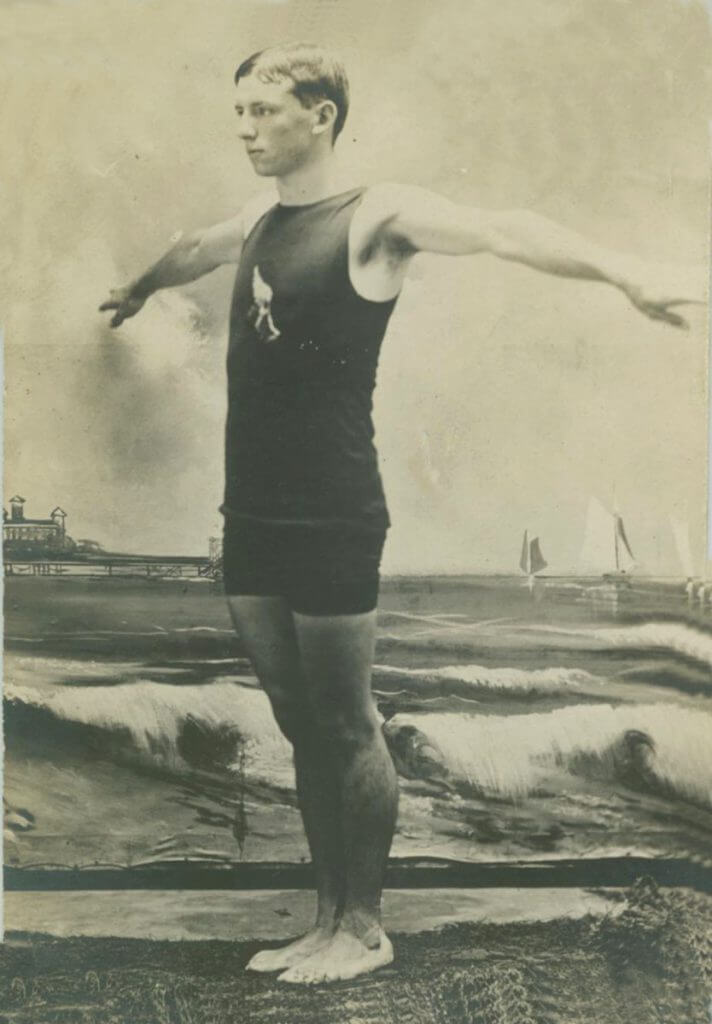
By Bruce Wigo
In January of 1897, the University of Pennsylvania became the first American college to make a swimming pool available to its students. To supervise the activities at the pool, the University hired George Kistler, an Englishman who had won the one-mile professional “championship of the world”, in London, in 1887.
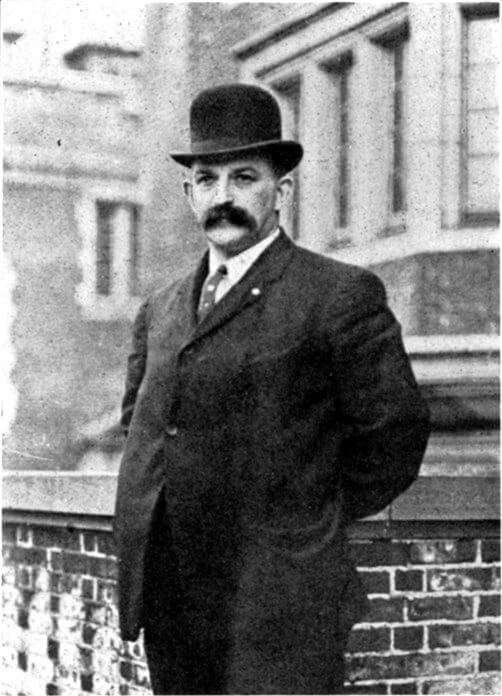
Photo Courtesy: ISHOF Archive: George Kistler, University of Pennylvania
Kistler had traveled to the US in 1891 hoping to find a position as a swimming instructor at a private athletic club. Unable to find a job in swimming, he found work as a coal miner until the promoters of the National Swimming Association saw him swim and learned his background. The NSA was building the Wayne Natatorium in a suburb of Philadelphia. When completed it wold be the largest concrete swimming pool in the world, measuring 500 ft long by 100 ft. wide. It had a fine clubhouse with changing rooms for ladies and when the “Nat” opened in July of 1895, a large crowd of amateur swimmers, representing the NSA, the Philadelphia Swimming Association, the New York Athletic Club, the University of Pennsylvania and a number of other organizations were present. It was indeed a gala occasion!
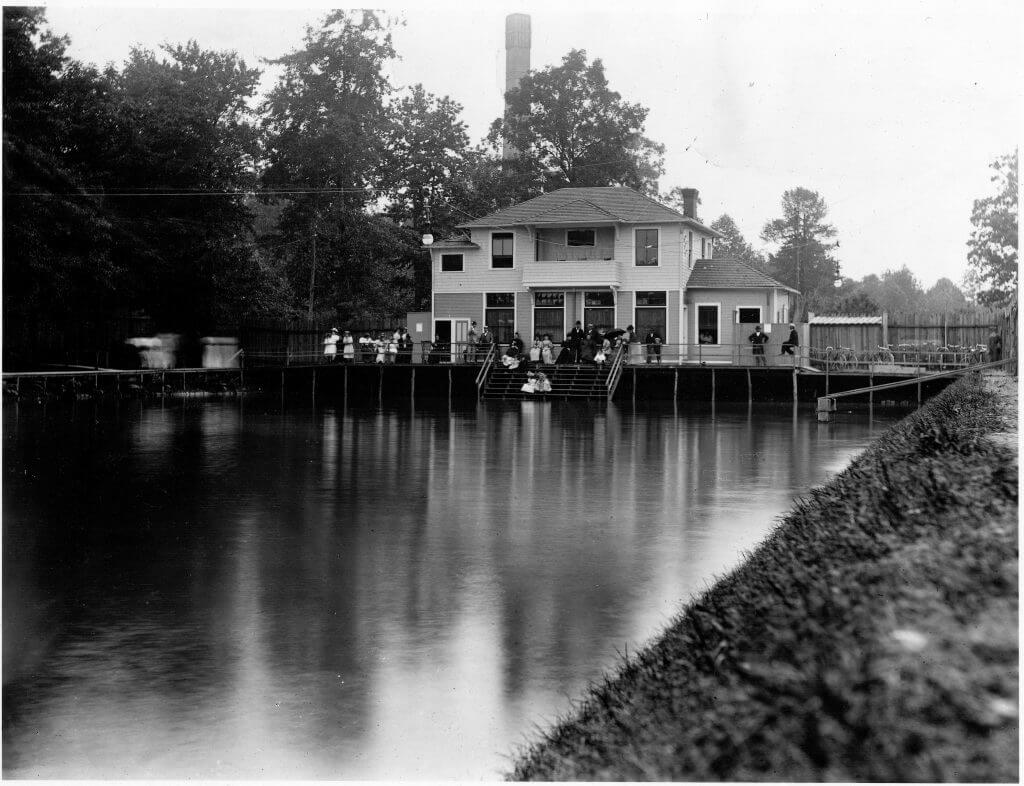
Photo Courtesy: ISHOF Archive – Wayne Natatorium, Wayne, Pennsylvania
Two years later, Penn opened its pool in the basement of Houston Hall, a building designed as a recreational center for students. Where students could find relief from the rigors of study. In addition to the swimming pool, there was a bowling alley, pool tables and exercise rooms. A university building dedicated to play was a revolutionary concept for Universities at the time. With the building of the pool, the University also made it mandatory that students know how to swim, and to teach swimming it hired George Kistler as America’s first collegiate swimming instructor.
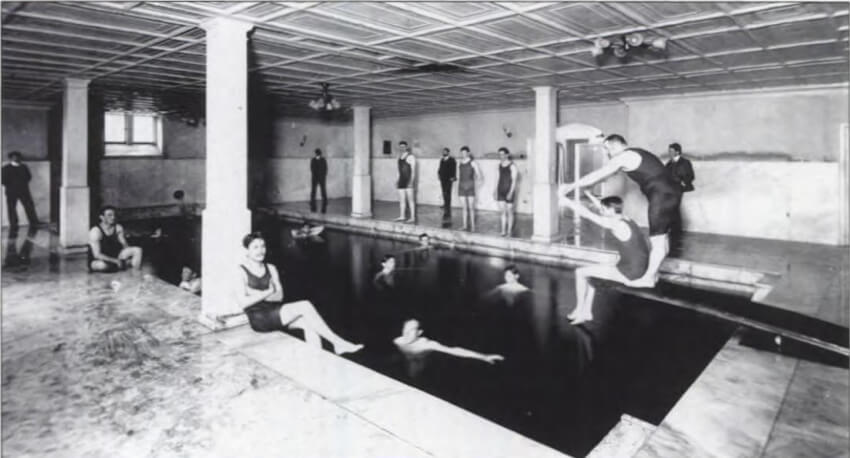
Photo Courtesy: ISHOF Archive – University of Pennsylvania Houston Hall Pool
On the occasion of Ladies Day at the university, on February 21, 1897 he organized the first swim meet in the pool that measured just 10 feet in width by 30 feet in length. The meet included exhibitions of the strokes used at the time: the breaststroke, side-stroke, Trudgeon and over-arm side stroke, by Professor Kistler, relay races and a water polo game pitting students at Penn against members of the NSA. Then in the Fall of 1897, Kistler organized the first Intercollegiate meet, featuring his Penn swimmers against swimmers from the New York Athletic Club who attended Columbia University.
The next year, Kistler joined forces with James Sullivan (President of the AAU and namesake of the Sullivan Award) to organize the first “National” collegiate championship as part of the AAU Championships at the Sportsmen’s Show, in Boston, in March of 1898.
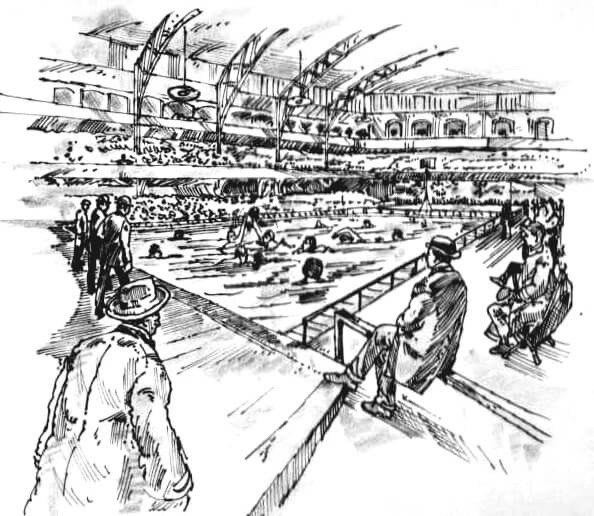
Photo Courtesy: ISHOF Archive – 1898 Sportsmen’s Show, Boston Mechanic’s Hall
Like our modern-day Olympic Trials, a temporary tank was constructed in Boston’s Mechanics Hall and 14,000 spectators watched Penn beat Columbia in both swimming and water polo for the “National” intercollegiate titles. The next year the Championship was contested again at the Sportsmen’s Show, this time in New York’s Madison Square Garden before another huge crowd.
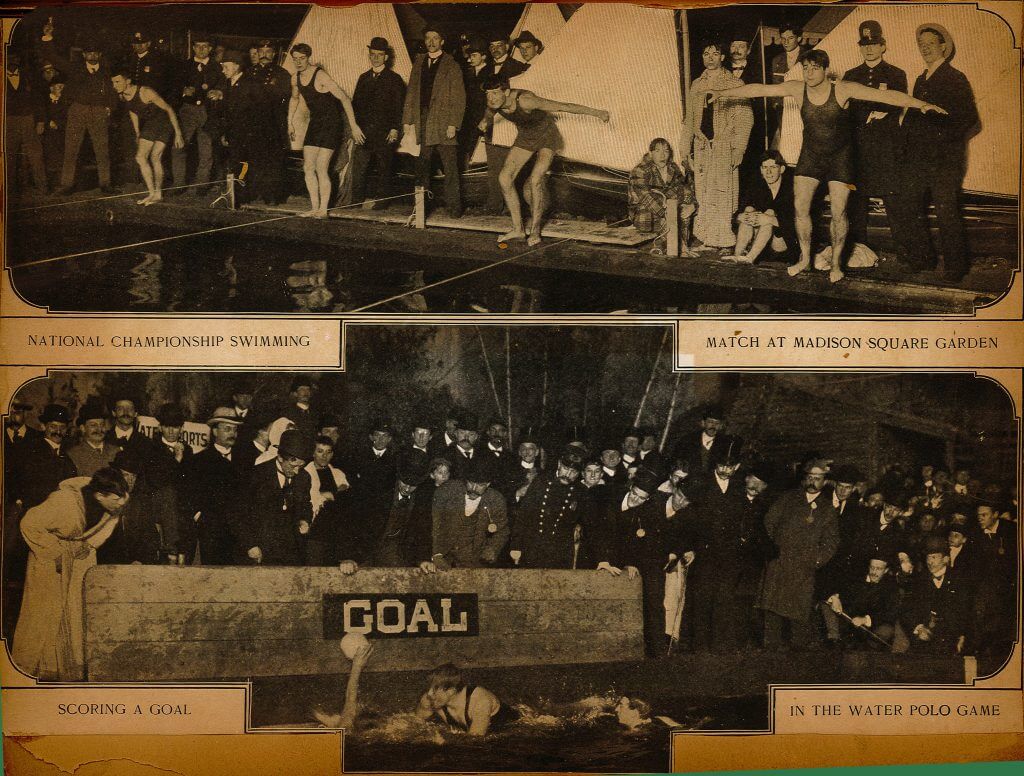
Photo Courtesy: ISHOF Archive: The Sportsmen’s Show at Madison Square Garden, 1899
The star performer of both the AAU and College events at MSG was E. Carroll Schaeffer, America’s first great swimmer and first great college swimmer. Swimming for the University of Pennsylvania from 1898 to 1902, he held every American swimming record from 20 yds. to 1 mile. Called “Midget’ because of his small stature, Schaeffer swam his way back from polio and weighed a scant 118 lbs. when he began his brilliant swimming career at Penn. Besides being a speed swimmer, he held the American record for swimming underwater (232 ft. 11 in).

Photo Courtesy: ISHOF Archive – E. Carroll Schaeffer
Collegiate swimming was off to a great start. Yale and Harvard formed teams in 1900, while Cornell, the University of Chicago, the Armour Institute and the University of Wisconsin formed teams in 1901. Princeton, Brown, and Washington University of St. Louis were next take up swimming as a sport. But it wasn’t until 1906 that Penn, Princeton and Columbia formed the first swimming league: the “Intercollegiate Swimming Association.” By then, the pools built for the sportsmen’s shows were being used for motor boats and the Championships moved to the exhibition pools at the schools, like Penn’s Weightman Hall, which replaced Houston Hall in 1904, and measured 30 feet wide x 100 feet in length.
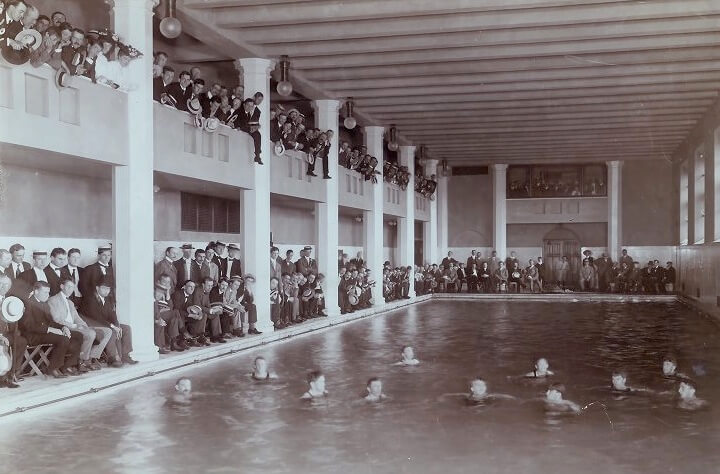
Photo Courtesy: ISHOF Archive: Weightman Pool, University of Pennsylvania
This was the standard length until Steel magnate and philanthropist Andrew Carnegie agreed to build what would become the finest swimming pool in America, if not the world.
“Yale’s Carnegie Pool was conceived and designed with the idea of providing not only a place for students to bathe and perfect themselves in the art of swimming, but also an amphitheater where lovers of aquatics could congregate and witness contests of speed, skill and endurance in swimming, water polo and kindred sports.”
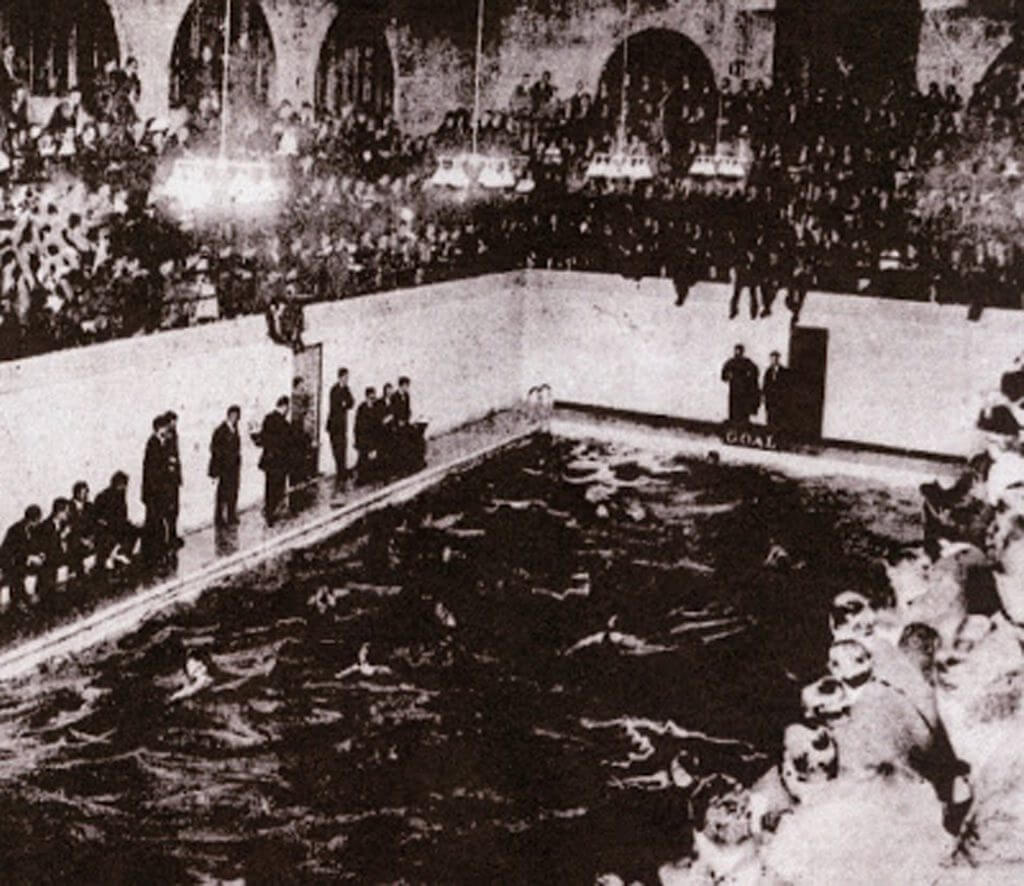
Photo Courtesy: ISHOF Archive: Yale’s Carnegie Pool, circa 1912
It was Ogden Reid, captain of Yale’s championship water polo team of 1905, who presented Mr. Carnegie with the idea and who worked out the plans by first giving his ideas to the architect. After his ideas had been placed on paper he then asked the leading competitive swimmers, coaches and managers in the country to criticize the drawings and make suggestions.
The pool measured seventy-five feet in length by thirty feet wide, ideal dimensions for both swimming races and water polo contests. It’s depth ranged from six to eleven feet and galleries provided step-like rows of seats which could accommodate nearly one-thousand persons. Beneath the gallery were locker rooms, the manager’s office and hot, steam rubbing and and shower rooms. The entire pool as well as the walks around it and the gallery wall were in blue and white tiles. There were five blue lines running lengthwise along the bottom of the pool to serve as sides for swimmers and plungers, and th water polo lines were distinctly marked on the sides as well as on the bottom. A system of tiles has been arranged to measure off the feet for plungers.
The room was also of an unusual height, measuring over fifty feet from the water to the roof, which, besides giving clean, pure air and plenty of it, afforded every opportunity for high divers to indulge in their favorite pastime. Future pools at Michigan, Ohio State and the new pool at Yale 20 years later would model the idea of this incredible Carnegie gift to aquatics.
For the rest of the early history of intercollegiate swimming I recommend reading the newly released biography of Kiphuth of Yale: A Swimming Dynasty by Peter E. Kennedy, Ph.D. Available through Amazon




Great read…well done Bruce Wigo!!!
Interesting read. It shows how mankind can advance things over time. Swimming has come a very long ways over time. It’s a great sport.
Great read!
Ooh
Great Article Bruce!
Videos?
Wonderful article. Well done Bruce. I think that with Brent as CEO and you as Historian, ISHOF will kick off to new unforseen yet heavens! Thank you both for your contributions to aquatics. Happy new year.
It is amazing that any body can write something like that. I ask forgive my bad english but i am learning. I am a swimmer from venezuela (Master K-67) and love the pools, water and competitions. kmeyo
So interesting…of course UPENN led the way #quakers❤️????♀️
The history of the sport we all love is in good hands with Bruce leading the way.